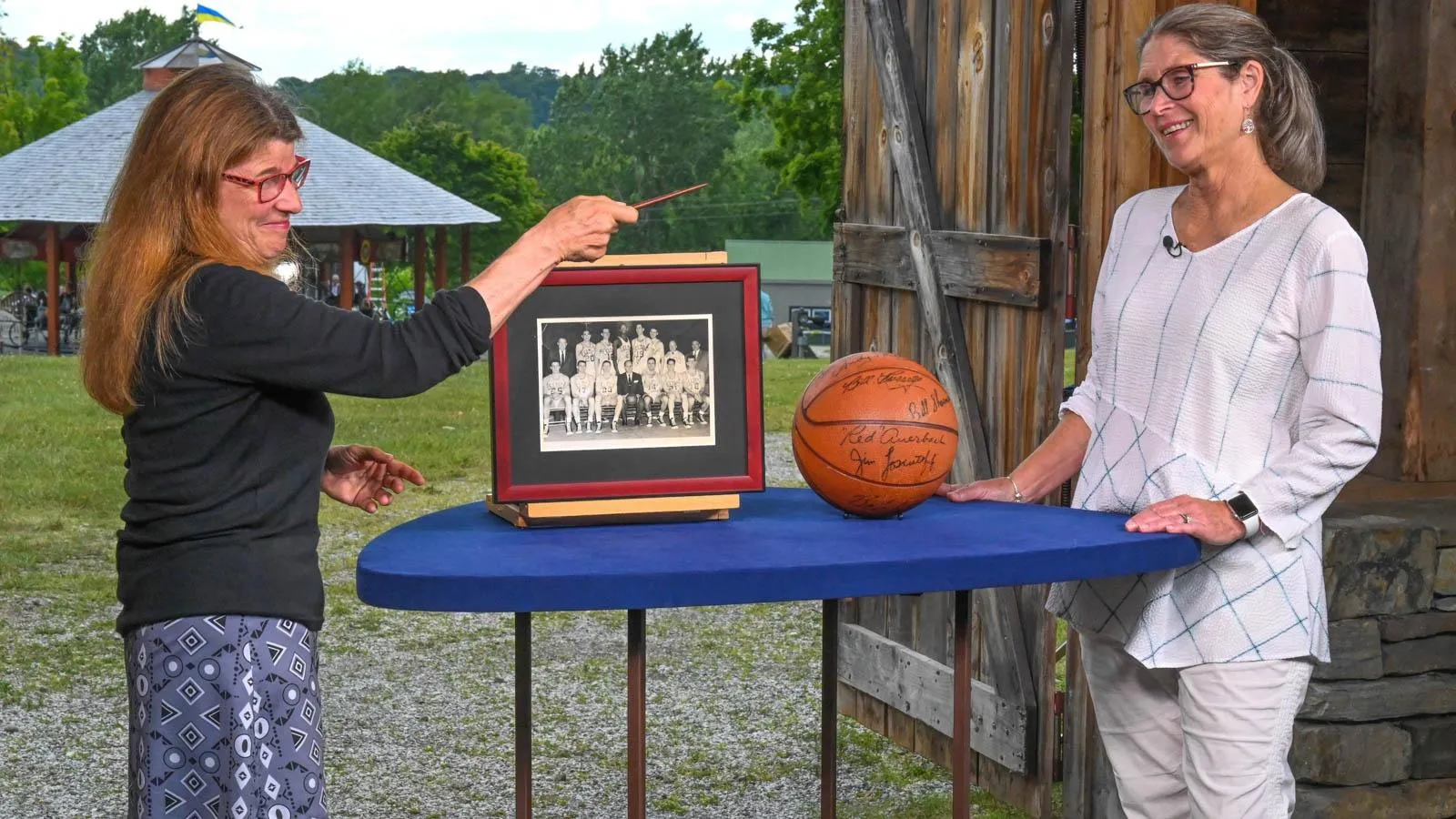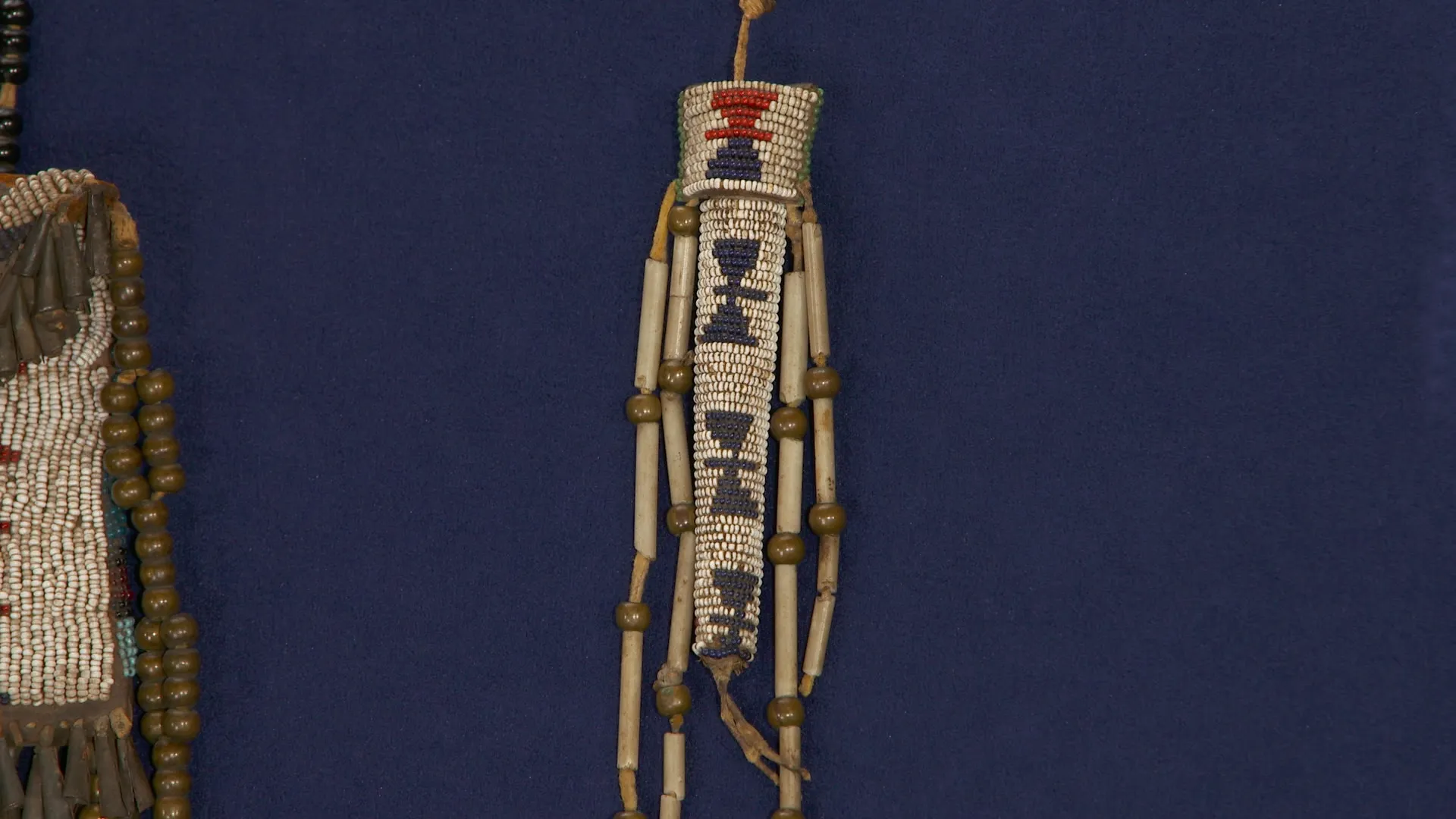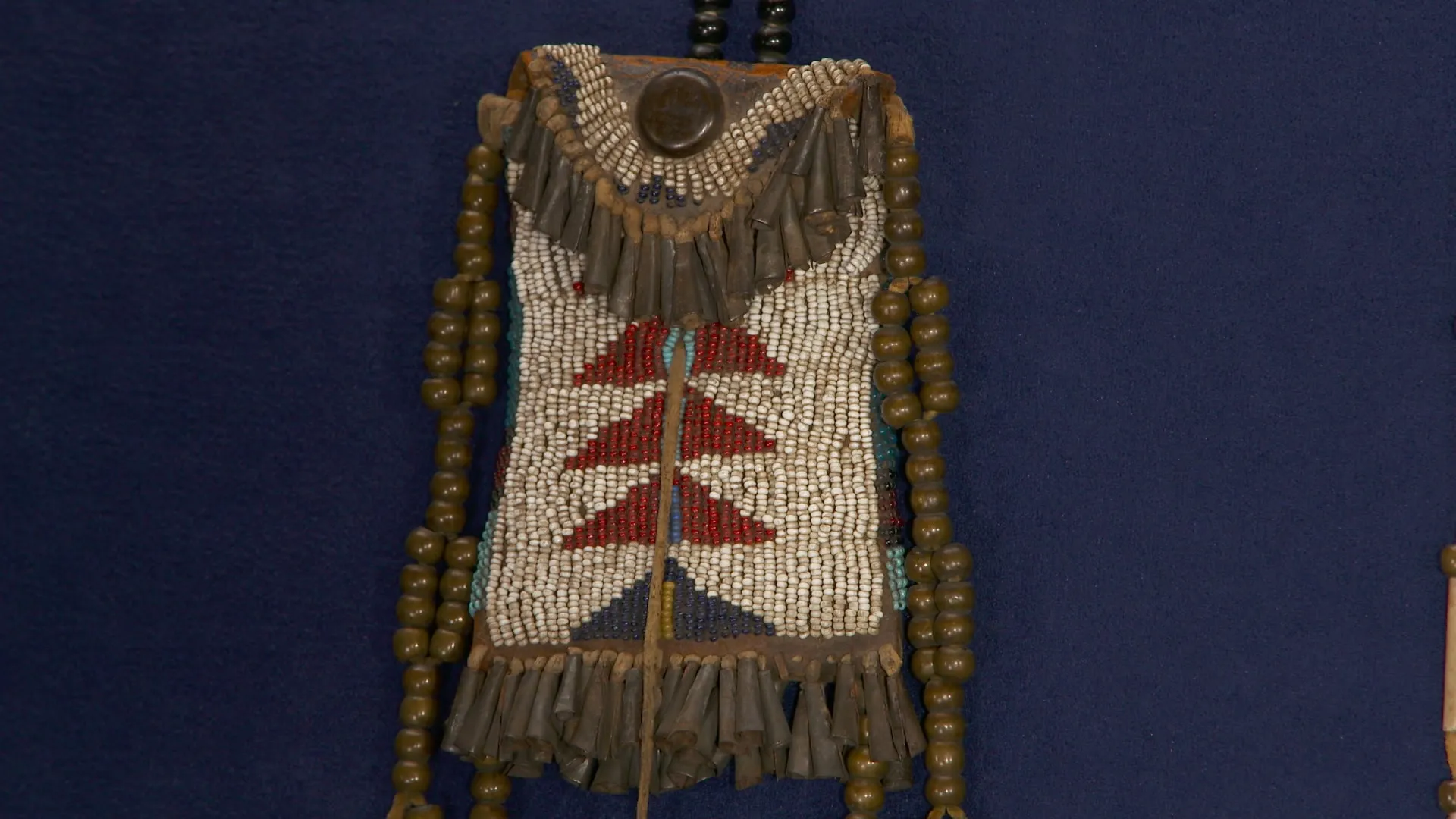GUEST: I purchased this group at an antique shop in Winter Park, Florida. The dealer apparently didn't know anything about them. He told me that he had purchased them from a woman who claimed Native American ancestry on both sides.
APPRAISER: Right.
GUEST: Said she was Cherokee and Potawatomi. He thought these pieces were either Cherokee or Seminole. The minute I saw them, I knew that was wrong, that they had to be Northern Plains. But I don't know what tribe they are or what their age is or what their value is, and I'm very interested in finding out.
APPRAISER: The piece nearest you is quite common. It's a pipe bag, and this is from the Sioux in the Plains. It's quite typical, except that we, we usually have, you know, the bottom band of beadwork here and the top.
GUEST: Yeah.
APPRAISER: And this is usually more empty. But this is heavily beaded, so it's r, rather unusual for the, the pattern.
GUEST: It is, and it's... And it's beaded on both sides.
APPRAISER: Right. And you have sort of the tin cones here with some horsehair that's dyed. And it's probably from about 1880, or, l, like, the fourth quarter of the 19th century. This here is from about 1880, and it's Southern Plains.
GUEST: Okay.
APPRAISER: And it's Comanche Kiowa.
GUEST: Oh, no kidding.
APPRAISER: Yes. And it's an awl case, which would contain the awl, which they would use in their... Making of their clothing and things like this.
GUEST: Right.
APPRAISER: They, they'd pierce the deer skins, which would help the, with the stitching. It's very sort of delicate work. Very tiny beads, probably from Venice.
GUEST: Yeah.
APPRAISER: And these are glass tubular beads here.
GUEST: Okay.
APPRAISER: The earlier ones would have probably been, uh, bird bone, leg bone, or something like that.
GUEST: Yes.
APPRAISER: With the usual sort of brass bits on the end.
GUEST: Mm.
APPRAISER: For me, this is the piece that I really, really love here. This is...
GUEST: Me, too.
APPRAISER: This is a strike-a-light. And as you probably know, a strike-a-light is used to contain the steel and the flint to make fires. This is also Southern Plains.
GUEST: Oh, wow.
APPRAISER: Comanche Kiowa.
GUEST: Wow.
APPRAISER: The beads are brass and they're probably from France. The beads here will probably be from Venice.
GUEST: Mm-hmm.
APPRAISER: Now, the back is also quite interesting. This is commercial leather. It's oak-tanned. It's probably from saddle leather of some kind. And this design is classical Comanche design here.
GUEST: Oh, wow.
APPRAISER: Very nice. This is about 1860, so this is pre-reservation.
GUEST: No kidding.
APPRAISER: And really super-desirable. All three of the pieces, they've used sinew to hold the pieces together and to put the beads on, on the pieces. What did you pay for the group?
GUEST: Uh, the dealer was asking $1,800.
APPRAISER: Uh-huh.
GUEST: And I gave him $1,500.
APPRAISER: For the three pieces?
GUEST: For the three, yes.
APPRAISER: When did you buy them?
GUEST: I, I'd say it's about ten years ago.
APPRAISER: So let's start with that. Any idea?
GUEST: I don't know, I've seen pipe bags sell for $4,000.
APPRAISER: Right. I think you're sort of on the money there. Um, given the condition problems, I'd say, I'd say probably $3,500 to $4,000.
GUEST: Okay.
APPRAISER: That's a retail price.
GUEST: Yeah.
APPRAISER: This, which is a real favorite of mine, which is so sweet, they don't make a lot, probably $800 to $1,000. I think on a good day, that could easily do maybe $1,500, 'cause it's, it is so delicate and so sweet. And it's all there.
GUEST: Yeah.
APPRAISER: This, of course, is the real beauty on here. And these quite often don't do that much. But this, I'd be quite comfortable in valuing it probably $6,000 to $8,000.
GUEST: No kidding. That's terrific.













